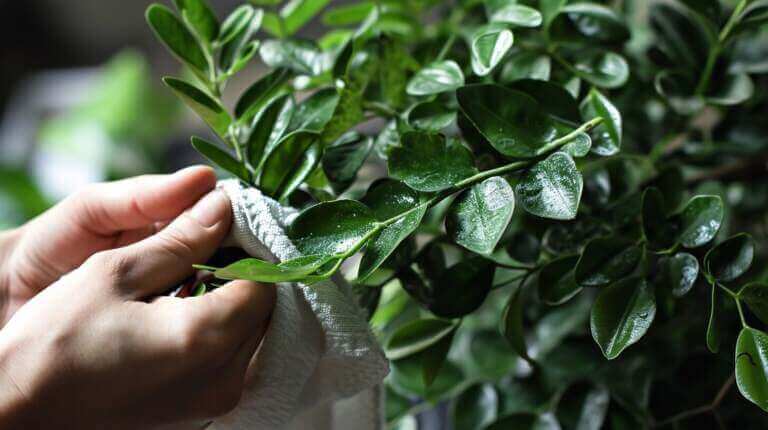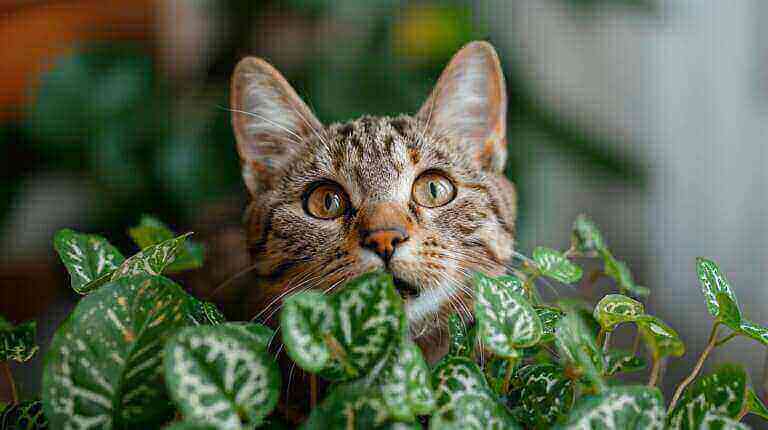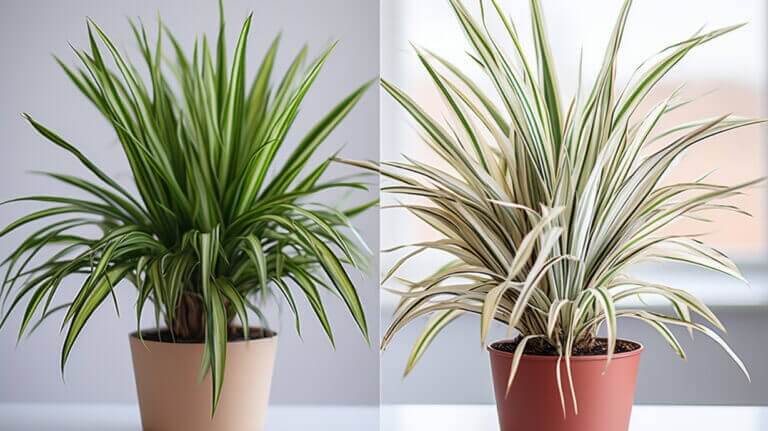How to Prevent and Treat Common Pests and Diseases on Schefflera Umbrella Tree Plants
Growing schefflera plants can be a rewarding experience, but it’s important to be aware of the common pests and diseases that can affect their health and growth. By taking preventive measures and knowing how to identify and treat these issues, you can ensure the well-being of your schefflera plants. In this article, I will discuss the common pests and diseases that affect schefflera plants and provide tips for preventing and treating them.
Key Takeaways:
- Regularly inspect your schefflera plants for signs of pests or diseases
- Provide optimal growing conditions, including proper watering and adequate lighting
- Quarantine new plants before introducing them to your existing schefflera plants
- Use organic pest control methods like neem oil or insecticidal soap
- Follow specific treatments for different diseases, such as using fungicides for fungal infections
Common Pests on Schefflera Plants
Schefflera plants are highly susceptible to pest infestations, which can cause significant damage if left untreated. Here are some common pests that you may encounter when caring for schefflera plants:
- Mealybugs: These small, white, cottony insects feed on the sap of schefflera plants, causing wilting and yellowing of leaves.
- Spider mites: These tiny pests spin webs and suck the sap from the leaves, leading to yellowing and webbing on the foliage.
- Aphids: These small, soft-bodied insects can multiply rapidly and cause leaf curling, stunted growth, and sticky honeydew residue on the leaves.
- Scales: These armored insects attach themselves to the stems and leaves of schefflera plants, draining sap and causing leaf yellowing and premature leaf drop.
- Fungus gnats: These small flies lay their eggs in the soil, and their larvae feed on the plant roots, leading to poor growth and yellowing leaves.
- Caterpillars: The larvae of various moth species can chew on the foliage, causing holes and ragged edges on the leaves.
- Snails and slugs: These mollusks feed on the leaves of schefflera plants, leaving behind large, irregular holes in the foliage.
Table: Common Pests and Their Effects on Schefflera Plants
| Pest | Effects on Schefflera Plants |
|---|---|
| Mealybugs | Wilting, yellowing leaves |
| Spider mites | Yellowing leaves, webbing on foliage |
| Aphids | Leaf curling, stunted growth, sticky residue |
| Scales | Leaf yellowing, premature leaf drop |
| Fungus gnats | Poor growth, yellowing leaves |
| Caterpillars | Holes, ragged edges on leaves |
| Snails and slugs | Irregular holes in foliage |
Understanding the characteristics and effects of these common pests will help you take appropriate action to prevent or treat infestations, ensuring the health and vitality of your schefflera plants.
Common Diseases on Schefflera Plants
Schefflera plants, like any other plants, are susceptible to various diseases that can impact their health and vitality. It’s important to be aware of these common diseases and know how to identify and manage them effectively. Below are some of the most prevalent diseases that affect schefflera plants:
Fungal Diseases
Fungal diseases are a common issue for schefflera plants, and two specific types are alternaria leaf spot and xanthomonas leaf spot. Alternaria leaf spot is characterized by dark brown or black spots on the leaves, which can eventually lead to defoliation if left untreated. Xanthomonas leaf spot, on the other hand, causes yellow or brown spots with a yellow halo, often accompanied by dark necrotic lesions. These fungal diseases can be managed by removing infected leaves, practicing good sanitation, and applying fungicides as necessary.
Bacterial Diseases
Bacterial diseases can also pose a threat to schefflera plants. Bacterial leaf spot, for example, causes tan to yellow spots on the lower surface of the leaves, which may eventually enlarge and become necrotic. This disease can be managed through proper sanitation, avoiding overhead watering, and applying copper-based bactericides. It’s important to promptly remove and dispose of any infected foliage to prevent the spread of bacteria.
Cold Injury
Cold injury is another common issue that can affect schefflera plants, especially when exposed to low temperatures. Symptoms include wilted and discolored leaves, necrotic spots, and leaf drop. Providing proper insulation or moving the plant to a warmer location can help prevent cold injury. However, it’s worth noting that schefflera plants are generally sensitive to cold and should be kept in warmer indoor environments.
By being aware of these common diseases and taking prompt action when necessary, you can ensure the health and longevity of your schefflera plants. Regular monitoring, proper care, and effective management techniques will help you maintain vibrant and thriving schefflera plants in your home or garden.
Preventing Pest and Disease Infestations
To ensure the health and vitality of your schefflera plants, it is crucial to take preventive measures against pest and disease infestations. By providing optimal growing conditions and implementing proper care practices, you can create an environment that discourages the presence of pests and minimizes the risk of diseases.
Optimal Growing Conditions
Creating optimal growing conditions is essential for the overall well-being of schefflera plants. This includes providing proper watering, ensuring adequate lighting, and maintaining appropriate humidity levels. Schefflera plants thrive in bright indirect light, so placing them near a window with filtered sunlight is ideal. Overwatering can lead to root rot, so it is important to allow the soil to dry out between waterings. Additionally, controlling humidity levels by misting the leaves or using a humidifier can help prevent the development of fungal diseases.
Regular Inspection
Regularly inspecting your schefflera plants is an effective way to identify and address pest or disease issues early on. Take the time to carefully examine the leaves, stems, and soil for any signs of pests, such as webs, insects, or eggs. Look for symptoms of diseases, such as spots, discoloration, or wilting. By catching problems early, you can take prompt action and prevent them from spreading or causing severe damage.
Quarantine New Plants
When introducing new plants to your collection, it is important to quarantine them before placing them near your existing schefflera plants. This helps prevent the spread of pests or diseases that may be present on the new plants. Keep the new plants separate from your established ones for a few weeks and monitor them closely for any signs of infestations or illnesses. This precautionary measure can help protect the health of your entire schefflera plant collection.
Treating Pest and Disease Infestations on Umbrella Plant
When it comes to maintaining the health and well-being of your schefflera plants, treating pest and disease infestations is crucial. There are various methods and treatments that can be effective in managing these issues.
Organic pest control is a popular and environmentally friendly approach. Neem oil, insecticidal soap, and horticultural oil are effective options for combating pests like mealybugs, spider mites, and aphids. These natural remedies can be applied directly to the affected areas, suffocating and repelling the pests.
Another method is the introduction of natural predators. Ladybugs and lacewings, for example, are voracious eaters of common pests. Releasing these beneficial insects in your garden can help control pest populations without the need for chemical interventions.
In some cases, chemical pesticides may be necessary, but they should always be used as a last resort. It is important to follow the instructions carefully and use them sparingly to minimize any negative impact on the environment and the health of the plants.
| Pest or Disease | Treatment |
|---|---|
| Mealybugs, Spider Mites, Aphids | Neem oil, insecticidal soap, horticultural oil |
| Fungal Infections | Fungicides |
| Bacterial Infections | Bactericides |
| Caterpillars | Handpicking or biological control |
When treating diseases, it is essential to use specific treatments based on the type of infection. Fungicides are effective against fungal infections like alternaria leaf spot, while bactericides are used for bacterial leaf spot. Handpicking or introducing natural predators can be effective against caterpillar infestations.
By taking a proactive approach to pest and disease management and utilizing organic treatments whenever possible, you can maintain the health and vitality of your schefflera plants, ensuring their long-term success.
Tips for Healthy Growth of Schefflera Plants
Proper care is essential for the healthy growth of your schefflera plants. By following these tips, you can ensure that your plants thrive and remain resilient against pests and diseases.
Proper Pruning:
Regular pruning is crucial for maintaining the shape and health of schefflera plants. Remove any dead or damaged leaves, as well as any branches that appear weak or diseased. This will promote new growth and prevent the spread of pests and diseases.
Repotting:
As your schefflera plant grows, it may outgrow its current pot. Repotting is necessary to provide ample space for the roots and to maintain good drainage. Choose a pot that is one size larger and use well-draining soil to prevent waterlogging, which can lead to root rot.
Fertilizer Usage:
Proper fertilization is essential for the healthy growth of schefflera plants. Use a balanced, slow-release fertilizer during the growing season to provide essential nutrients. Be cautious not to over-fertilize, as this can lead to salt buildup in the soil and damage the plant.
Maintaining Good Drainage:
Proper drainage is crucial for schefflera plants, as they are susceptible to root rot. Ensure that your pot has drainage holes and use well-draining soil that allows excess water to flow away. Avoid leaving the plant in standing water, as this can suffocate the roots.
Providing Indirect Light:
Schefflera plants thrive in bright indirect light. Place them near a window where they can receive filtered sunlight throughout the day. Avoid exposing them to direct sunlight, as this can scorch their leaves. Rotating the plant regularly will ensure balanced growth.
Managing Humidity Levels:
Schefflera plants prefer moderate humidity. To increase humidity levels, place a tray filled with water near the plant or use a humidifier. Misting the leaves occasionally can also provide a moisture boost. Avoid exposing the plant to drafts or extreme temperature fluctuations, as this can stress the plant.
FAQ
What are the common pests that affect schefflera plants?
Common pests that affect schefflera plants include mealybugs, spider mites, aphids, scales, fungus gnats, caterpillars, snails, and slugs.
How do pests affect schefflera plants?
Pests can cause various damages to schefflera plants, including wilting, yellowing leaves, stunted growth, and leaf drop.
What are the common diseases that affect schefflera plants?
Common diseases that affect schefflera plants include alternaria leaf spot, xanthomonas leaf spot, bacterial leaf spot, and cold injury.
How can I prevent pest and disease infestations on my schefflera plants?
To prevent pest and disease infestations, provide optimal growing conditions, such as proper watering, adequate lighting, maintaining proper humidity levels, and regularly inspecting the plants for any signs of pests or diseases. Quarantining new plants can also help prevent the spread of pests or diseases.
What are some methods for treating pest and disease infestations on schefflera plants?
Organic pest control methods, such as using neem oil, insecticidal soap, or horticultural oil, can be effective in managing pests. Introducing natural predators and using chemical pesticides as a last resort may also be necessary. For diseases, specific treatments such as fungicides may be required.
What are some tips for promoting the healthy growth of schefflera plants?
Tips for healthy growth include proper pruning, repotting as needed, using a balanced fertilizer regularly, maintaining good drainage, providing indirect light, and managing humidity levels.







